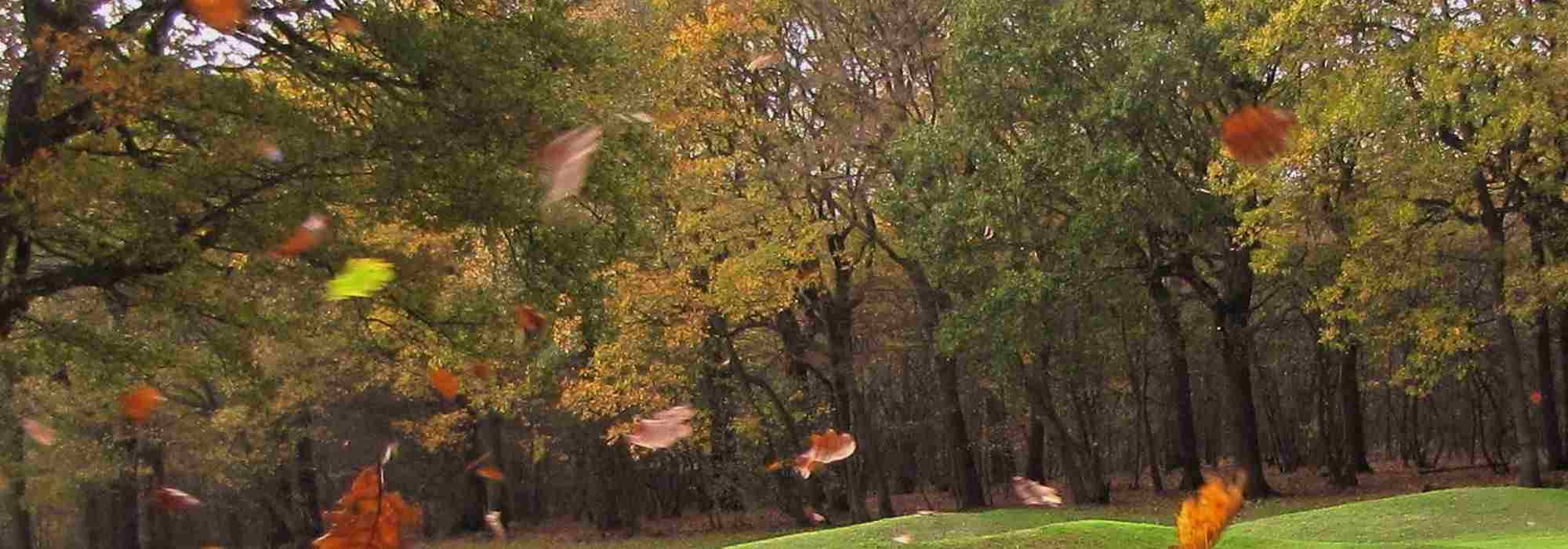
Protecting a very windy garden
Discover our simple windbreak solutions for the garden
Contents
It is essential to protect your garden from damage caused by wind. Planting windbreaks that can withstand the Mistral or Tramontane, which can be quite brutal, is imperative throughout the south. A strong wind can break branches, uproot trees, and damage buildings. Choosing wind-resistant bushes is crucial. The wind affects plants in multiple ways. Its mechanical action is obvious. Its effect on evaporation is less known but remains very important. It directly reduces plant growth by halting photosynthesis or causing loss of flowering. Simple solutions like wind-resistant hedges exist to enjoy your garden in complete peace.
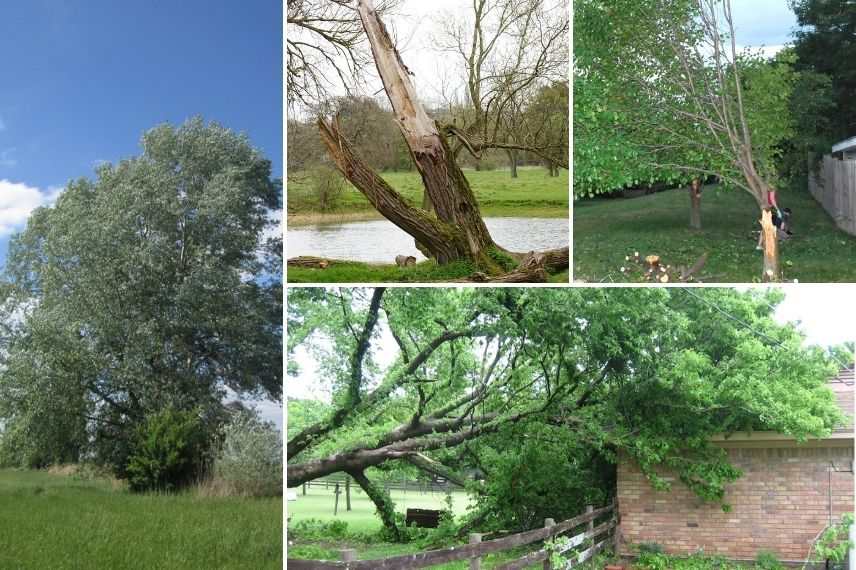
Large trees are the first victims of wind assaults in the garden.
Discover our tips and selection of wind-resistant plants to enjoy your garden safely.
Establishing windbreak hedges or wooded strips
Windbreaks or screens
Windbreaks consist of large trees (when made up of a single species, they are called screens) to shield against the onslaught of the wind. The main objective of this method is to protect agricultural, arboricultural, and fruit productions. The windbreak limits the effects of wind on the humidity and temperature of the air and soil. A windbreak can exert its influence over a distance that can reach ten times its height. A hedge of cypress trees 4 to 5 m high can protect the garden over 40 to 50 m. Conifers are not recommended for creating wind protection. They present a compact facade that is too resistant to the wind and cause turbulence.
Wooded strips
They consist of shrubs and trees distributed between deciduous and evergreen species. The wooded strip should be planted in several rows in a staggered formation over a width of 2 m. Its height can vary between 6 and 20 m depending on the species. They form a protective space that is permeable to air, which proves more effective as a wind-resistant screen. They provide excellent protection against the wind, which they slow down without creating turbulence.
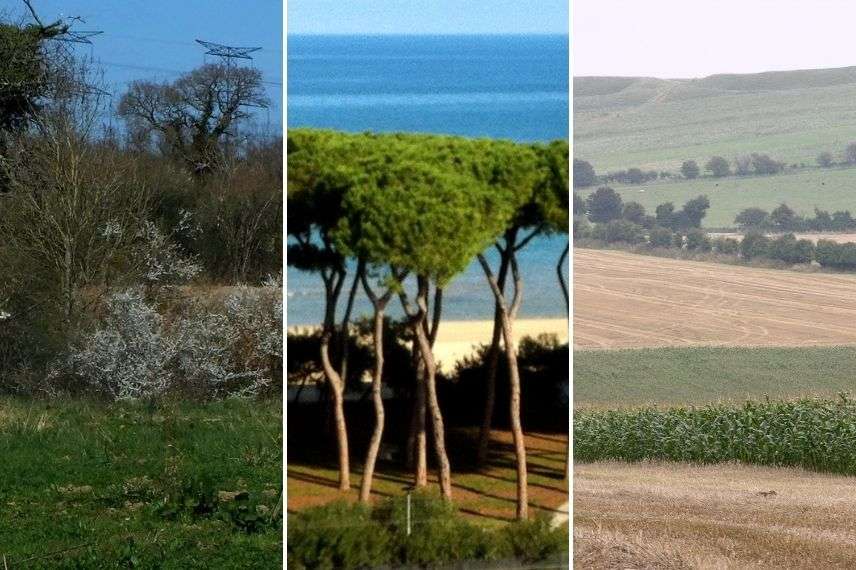 Drawing on the ancestral knowledge of bocage hedges on the right, it is preferable to create wooded strips rather than screens to slow down the wind.
Drawing on the ancestral knowledge of bocage hedges on the right, it is preferable to create wooded strips rather than screens to slow down the wind.
Choosing wind-resistant plants
Trees
- Italian alder Alnus cordata offers good wind resistance thanks to its slender crown. The alder grows quickly in shallow soil and tolerates limestone. It is ideal in wooded bands alongside elders or mountain ashes.
- Small-leaved lime Tilia cordata is a large tree with a rounded crown whose flowering scents the garden in summer. It serves as a very effective windbreak against pollution in urban gardens.
- White poplar Populus alba is an excellent screen against strong winds, even in coastal situations, thanks to its root system. It brings light with its silver-white undersides of leaves.
- Black pines: Pinus nigra are excellent windbreaks with their needle-like leaves. This is how they resist the drying effect of the wind. The pine is effective as a windbreak from a young age when the branches grow down to ground level.
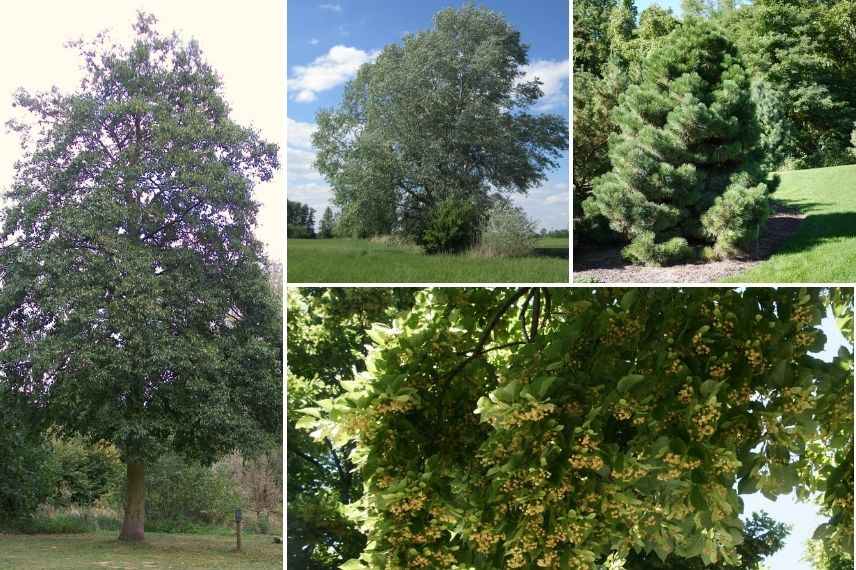 On the left, Italian alder; at the top, white poplar; and at the bottom, black pine with the fragrant flowering of lime.</caption]
On the left, Italian alder; at the top, white poplar; and at the bottom, black pine with the fragrant flowering of lime.</caption]
Shrubs
-
- Elaeagnus x angustifolia is a large shrub with a free form best suited for spacious areas. It can be replaced in a trimmed hedge by oleaster Eleagnus ebbengei. With dark green leaves on a silver underside, it produces small fragrant flowers in autumn. Ideal for exposure to sea spray, which it withstands well.
- Crataegus monogyna or hawthorn is one of the most wind-resistant shrubs. Dense and slightly thorny, its green foliage colours in autumn. It forms excellent windbreak thickets. Its clusters of white flowers are followed by fruits appreciated by birds. It is low-maintenance and tolerates limestone.
 Hawthorn is a decorative edge plant in all seasons.</caption]
Hawthorn is a decorative edge plant in all seasons.</caption]
- Barberry Berberis stenophylla is a vigorous and graceful shrub that produces numerous golden-yellow bells. Many colourful barberries find their place in a free hedge and withstand wind well, such as the purple barberry Berberis atropurpurea.
 On the left, Berberis stenophylla with its bright yellow flowering; on the right, purple barberry.</caption]
On the left, Berberis stenophylla with its bright yellow flowering; on the right, purple barberry.</caption]
- Another interesting thorny shrub: Hippophae rhamnoides. Sea buckthorn has leaves resembling silver willow, grows in any soil, even by the sea. It offers an attractive contrast with darker subjects or under a cover of pines.
 Sea buckthorn is permeable to wind and sea spray.</caption]
Sea buckthorn is permeable to wind and sea spray.</caption]
- Rosa rugosa, native to the coasts of Japan, withstands sea spray well. Its upright thorny stems bear green apple leaves. Its fragrant single or semi-double flowers are followed by large, decorative, marcescent red berries. It makes a good low windbreak up to 1.5 m.
 The rosebush Rosa rugosa tolerates all types of soil and resists sea spray.</caption]
The rosebush Rosa rugosa tolerates all types of soil and resists sea spray.</caption]
-
- Tamarix tetandra is a shrub with a light form if allowed to grow naturally. Its soft and tousled appearance provides good wind filtering and marine deposits like salt and sand. It enchants coastal gardens with its fluffy pink cloud.
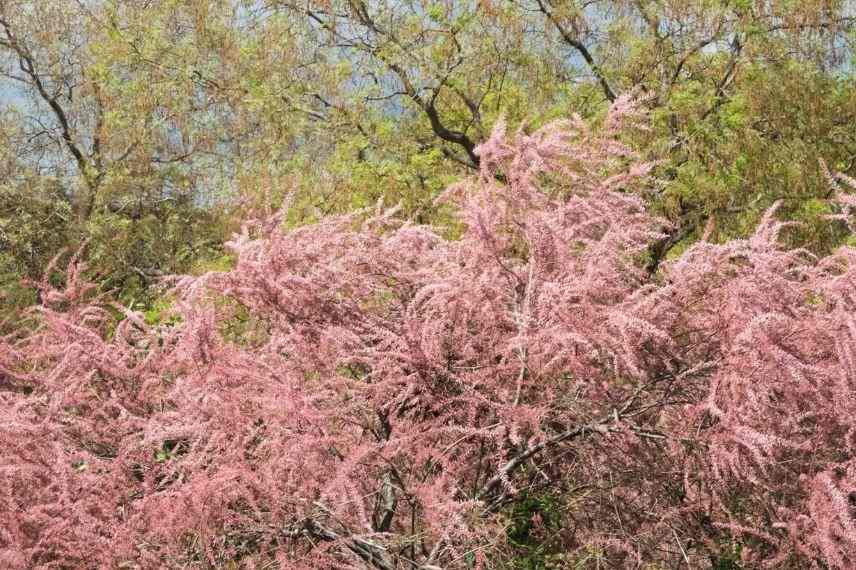 Tamarix protects coasts from erosion due to wind and sea; it has a very effective root system.</caption]
Tamarix protects coasts from erosion due to wind and sea; it has a very effective root system.</caption]
-
- Gorse or Ulex europaeus is a thorny shrub. Its bushy shape and evergreen foliage protect against the wind. However, it can become invasive. It is a resilient plant for poor coastal soils that is covered in fragrant bright yellow flowers in spring.
 Gorse is the symbol of heathland. It protects and beautifies any natural garden.</caption]
Gorse is the symbol of heathland. It protects and beautifies any natural garden.</caption]
Creating a more wind-permeable layout
The ancients knew that establishing a garden cannot be done without first analysing the orientation of prevailing winds. Indeed, wind is detrimental to plant growth as it cools and dries the atmosphere. The principle of combating wind involves increasing the roughness of the soil by creating topographical features. This is the role of hedges, walls, and barriers.
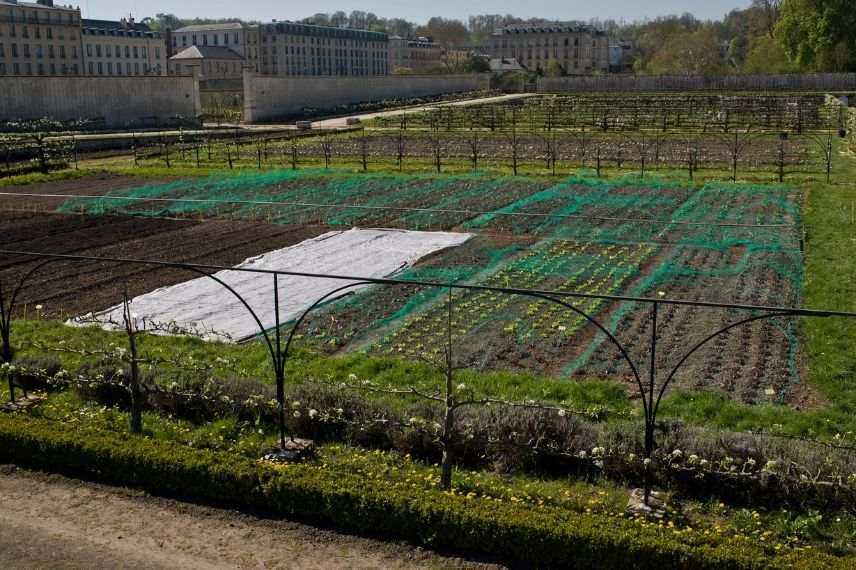 Louis XIV’s kitchen garden at Versailles uses the sunken garden technique. The walls and trimmed or trained hedges are there to control the wind and prevent frost.
Louis XIV’s kitchen garden at Versailles uses the sunken garden technique. The walls and trimmed or trained hedges are there to control the wind and prevent frost.
You can also create a coppice. By multiplying the emergence of new trunks, the anchorage will be more solid and the result will be very aesthetic. Many species, such as birches, naturally form coppices or do so following meteorological events. There is another trick to enhance the filtering effect of your plantings. Simply plant your vegetation, including trees, on mounds of earth. This ancient technique used in the countryside improves drainage and protects the collar of fragile plants. By creating these planting mounds, you multiply exposures. This technique allows for more plants and creates surprising effects that extend flowering periods.
 Mound planting creates wind traps.
Mound planting creates wind traps.
It is advisable to plant young subjects for better establishment. This allows time to develop a solid deep root system and also reduces the cost of purchase and transport.
Read also
How and why to create a windbreak hedge?Make solid stakings
In situations of repeated wind exposure, and if your soil is loose, here are some tips:
- Plant in clumps. In this case, the tree benefits from having started developing an anchorage through its already well-established root system.
- If you are planting bare-root trees (such as fruit trees), using a stake will be essential to avoid having your tree end up on its back.
- Plant young: to encourage the plant to develop a strong root system, as well as to produce more branches and potentially a thicker, more resilient trunk.
Prefer guying, as using a single stake attached to the trunk does not allow the tree to develop a solid trunk:
- STEP 1: First, measure the height of the tree. Then mark three or four points on the ground at a distance from the trunk equal to half the height of the tree.
- STEP 2: Drive 3 to 4 pointed wooden stakes into the ground. The stake should not be driven into the planting hole, but rather outside of it.
- STEP 3: After driving the stakes into the ground, attach the stakes to the tree using nylon or metal wire. The wire should be secured above a branch to prevent it from sliding down the trunk. Pass it through a piece of rubber tubing to avoid damaging the tree.
-
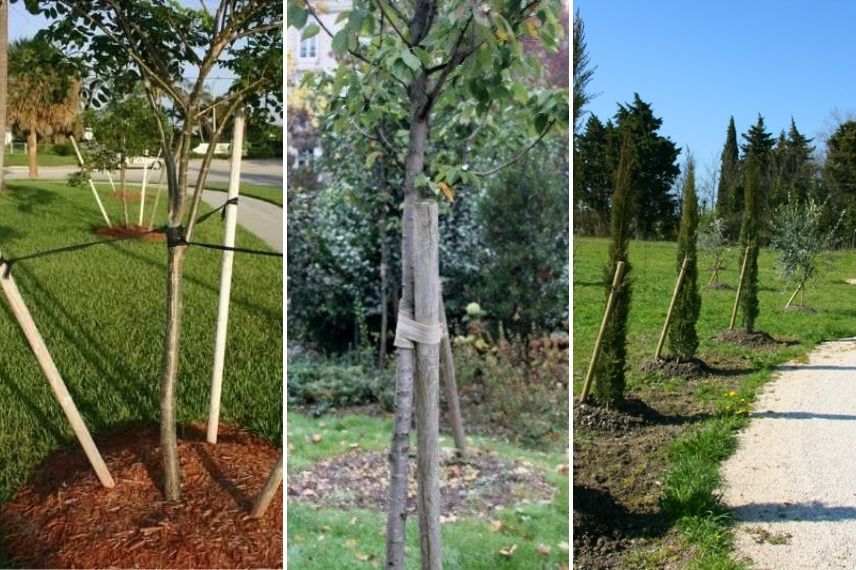
Guying with three anchor points. Conifers that are more exposed to wind should be staked like fruit trees.
You can purchase tree staking kits designed for this purpose.
- Subscribe!
- Contents
































Comments